Are you interested in starting a thriving marketplace like eBay, Amazon, or Etsy? Online marketplaces remain one of the most resilient and attractive business models, offering convenience, competitive pricing, and a variety of choices to customers. Despite economic shifts in 2024, consumers continue to turn to marketplaces for fast and cost-effective product deliveries.
If you already have an idea to create your unique marketplace, you may want to know how much it costs to build a marketplace website in 2025.
This article is a detailed breakdown of an online marketplace price. We have delivered many successful marketplaces. So, we hope that our expertise will help you make informed decisions when building your marketplace. Let’s dive deep into how much it costs to build a marketplace website.
Benefits of marketplace development for an entrepreneur
Online marketplace owners can obtain various benefits from creating marketplace websites. For example, your marketplace website can attract customers due to high-quality products. Therefore, you should expect a gradual increase in potential buyers, profit growth, and network expansion.
With marketplace development, your business will be more efficient since you will provide flexible options for your customers. According to Statista, almost half of the respondents selected the marketplaces because of their flexibility.
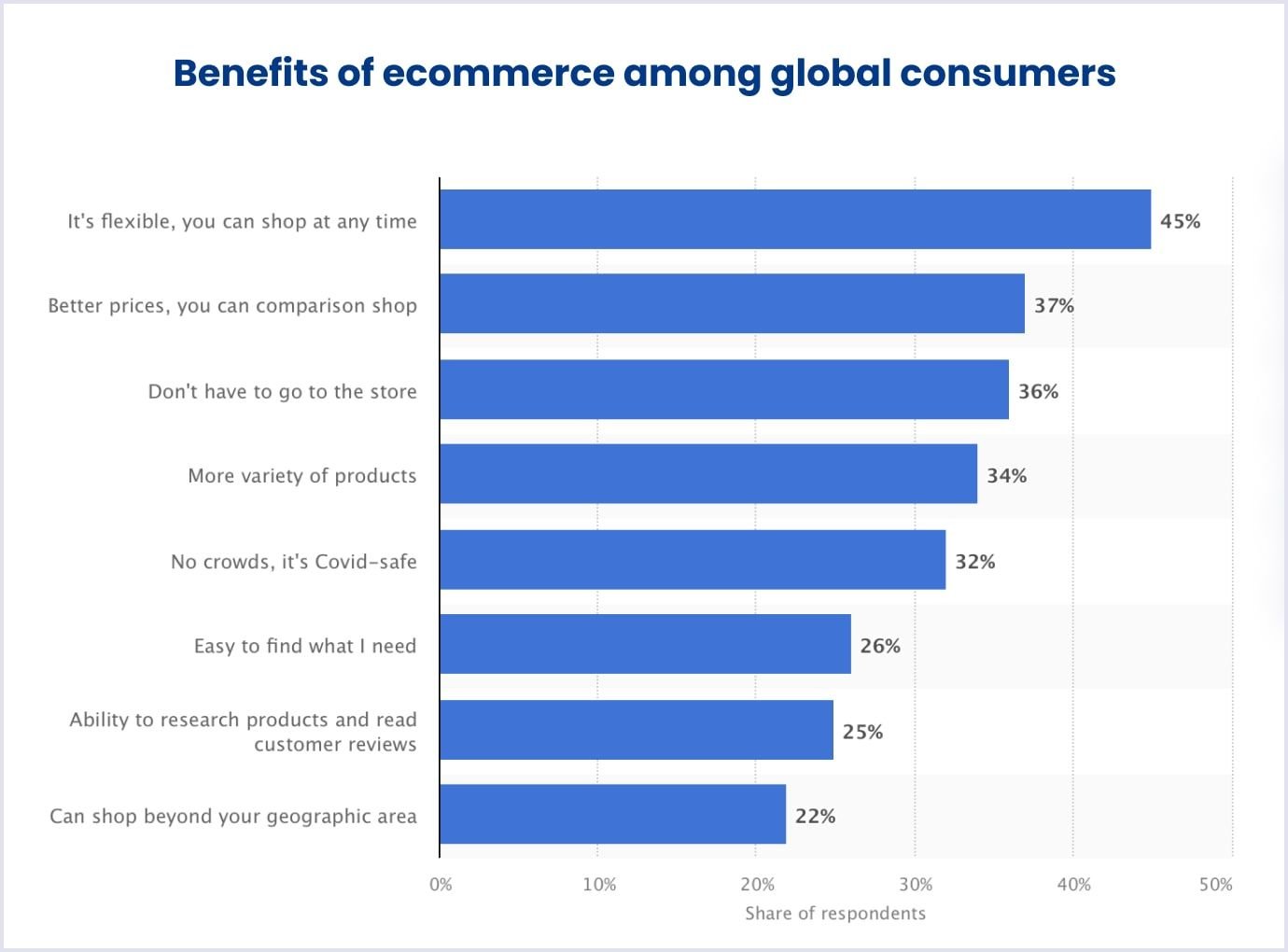
Source: Statista
Companies mainly plan to create their marketplaces for the following reasons:
- To raise brand awareness in the network.
- To provide competitive benefits in their niche.
- To increase the product range.
- To save money on keeping goods in the warehouse.
- To expand the scale of operations and revenues.
As a marketplace owner, you bridge the gap between many goods and services suppliers. Your marketplace website can offer customers many customizable alternatives to buy what they want without being limited to one supplier. Also, you can allow users of your marketplace to rate purchased products. Thus, customer feedback will benefit your marketplace.
You may also like: Top Online Marketplace Trends to Watch Out for in 2025
Types of online marketplaces
A marketplace website is an ecommerce marketplace platform that works as an intermediary between buyers and sellers. It facilitates virtual shopping for consumers who buy goods or services from different suppliers. Marketplaces can vary depending on the business model, the participants, the management approach, the niche, and more.
We prepared the table below to give you a grasp of marketplaces on the market today.
| Types of marketplace websites by business model | ||
| Type | Description | Example |
| Vertical | Focuses on a particular industry or niche. | StockX, TrueFacet, Chegg, Zillow, Uber, Etsy |
| Horizontal | Covers various goods and services in different categories. | Amazon, Couchsurfing, Rover, Poshmark |
| Types of marketplace websites by participants | ||
| B2B | Allows businesses to sell products to other companies. | Rakuten, Mercateo, Global Sources |
| B2C | Facilitates selling products between businesses and customers. | eBay, Bonanza, App Store, Google Play |
| C2C | Connects people who can offer a product or service with other people looking for the same product or service. | Poshmark, Carsales.com.au |
| P2P | Acts as a mediator between people who want to sell the product and those who want to purchase it. | Etsy, Uber, Postmates, Upwork |
| Types of marketplace websites by niche | ||
| Information | Allows participants to buy and sell their intellectual work products. | Twitch, Spotify, MediaMath, YouTube, SoundCloud |
| Goods and products | Allows vendors to sell their products or goods to a curated customer base. | Amazon, eBay, Etsy, OLX, AliExpress |
| Services | Allows businesses or customers to present their services to their customers. | Uber, Airbnb, Upwork, Booking.com, Couchsurfing |
| Investment and fundraising | Helps find investors, suppliers, or deals. | Kickstarter, Indiegogo, CircleUp |
Factors that influence marketplace development cost
Depending on the tasks a marketplace solves, you must invest a certain amount of money. Many aspects influence the costs to be contributed to marketplace development. So let's break down the factors affecting the cost of building a marketplace website.
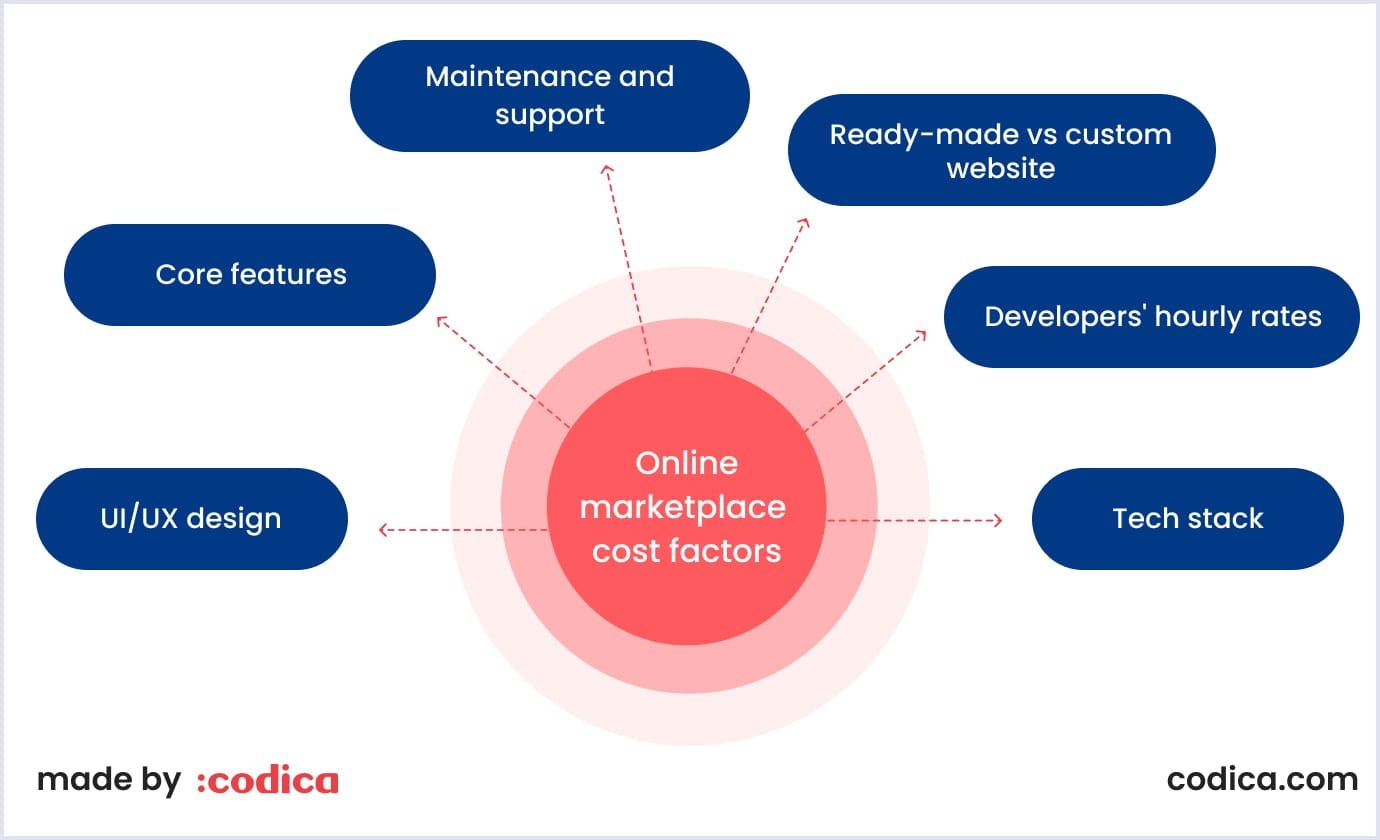
Ready-made vs custom development
The essential choice in website development is between ready-made and custom software development services. As WebFX states, building a website with an agency or freelancer costs $1,000 - $145,000, plus maintenance costs $3,600 - $50,000 per year. With a website builder, like Shopify and Sharetribe, the price is $0 to $5,400 per month.
Though you do not need to spend much initially, the ready-made or template solution may require additional investment:
- An installation of such software requires extra hiring;
- There is a risk of marketplace cost climbing due to upgrades, updates, and licensing;
- You need to buy relevant hardware to ensure stable performance.
Additionally, adapting a standard template to align with your unique business logic can be challenging and may limit scalability.
Meanwhile, turning to a fully customizable online marketplace website may require more investments upfront. At the same time, you get a solution with estimated costs that could be adapted to your business needs as your marketplace grows.

Developers’ hourly rate
Different ways of starting the development process affect marketplace website development costs. The main options for choosing a team specialized in online marketplace development services are as follows:
- In-house development team;
- Freelance services;
- Software development agency.
The core benefit of software consultancies is that such companies have solid experience in online marketplace development. This way, you can be sure to get the solution you need.
How much does it cost to develop a marketplace website with a custom software approach? It entirely depends on many factors, including your development team's location and hourly rates.
For example, according to Arc, the average hourly rate of a web developer in North America can be around $61-$80, reaching $160 per hour.
In Eastern European countries, the rates are lower. For example, if you turn to Ukrainian software development companies, they will charge you mostly $41-$80 per hour.
Product discovery
This crucial step in marketplace development ensures you turn your website development in the right direction. For an MVP, you can expect to spend 60 - 100 hours, estimated at $3,000 - $5,000, at a rate of $50, for this phase. More advanced website versions require around 120 - 180 hours.
During this project discovery phase, a team analyzes your marketplace business requirements and background. As a result, you get complete documentation and detailed estimates on your project. Armed with these assets, you can understand your marketplace price and plan your expenses.
We recommend starting your marketplace website development with this phase, as it mitigates development and business risks and helps you save costs in the long run.
Check out the video below on which deliverables you will get after product discovery.
UI/UX design
The marketplace website is a starting point for connecting with your customers. The website buttons, fields, product cards, menus, navigation, user flow, user interface, and experience elements guide your customers.
Positive interaction with your website brings conversions and encourages consumers to return for purchases. So, careful attention to this aspect in development will get positive business outcomes and optimize the marketplace price.
Creating an intuitive and accessible marketplace design takes 120 - 180 hours, depending on the website's complexity. So, the estimate for a design phase of custom marketplace development is $6,000 - $9,000. It includes the following:
- Design research;
- Wireframing;
- Prototyping;
- UX design;
- UI design.
At Codica, we will help you create a design for your marketplace that follows your brand style and business needs. Providing UI/UX design services, we will help you think through the details to make navigation on your website smooth and enjoyable.
You may also like: The Ultimate Guide to Ecommerce Website Design
Technology stack for marketplace development
Before building a marketplace, consider the programming tools you will use to create a platform. Why is it important for entrepreneurs? The tech stack you implement will influence the application’s performance and maintainability. Moreover, the tech stack affects the cost of hiring the specialists to make your business idea a reality.
If the wrong tools are used, you may get low page loading speed and face scalability and update problems. We suggest choosing technologies that will make your marketplace scalable and flexible.
Let’s look at the leading technologies you need to implement the marketplace platform features.
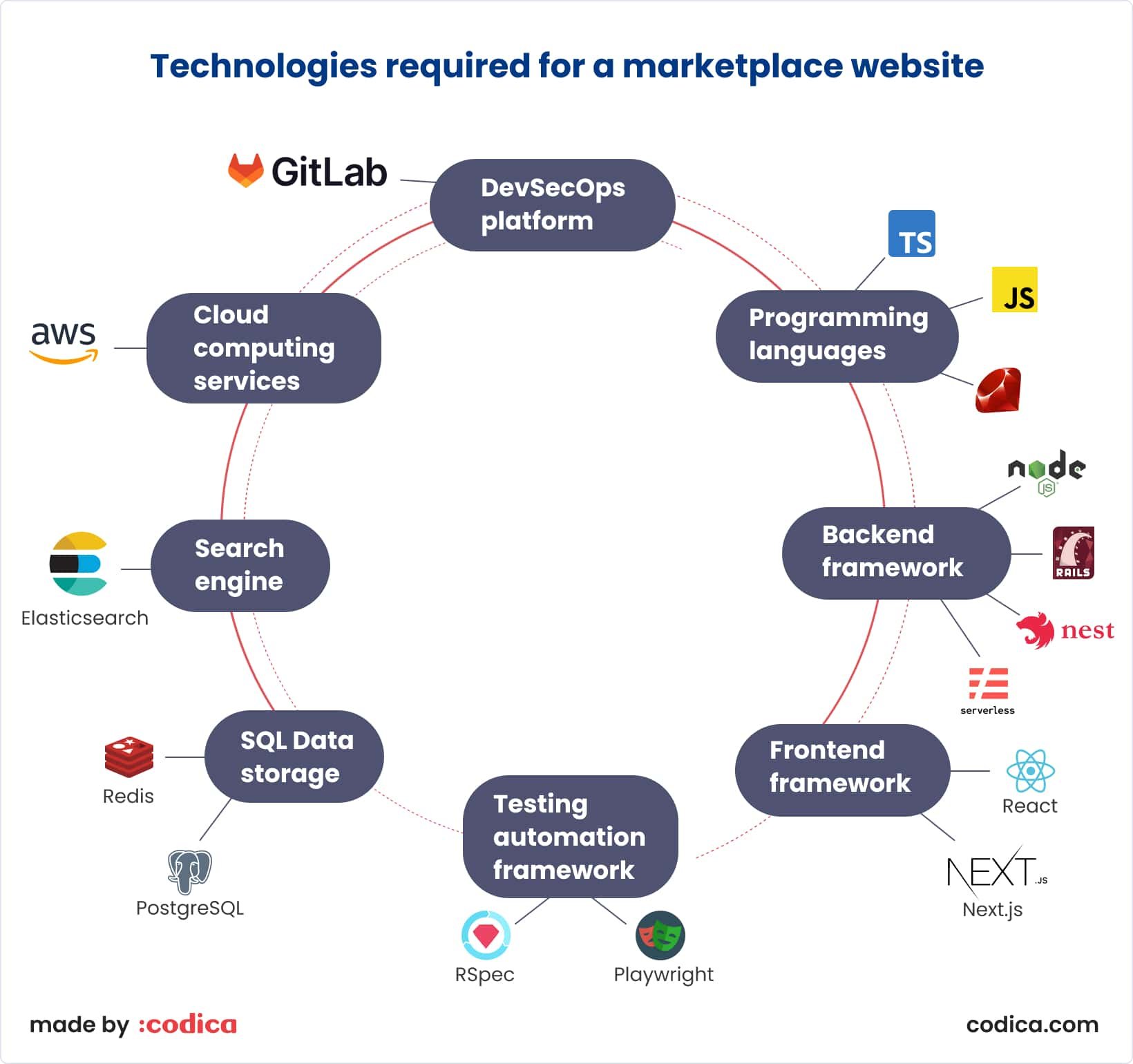
Backend
This part of a marketplace website depends on the frameworks and data processing technologies developers use for the server side. Check out the table below for an estimated cost for marketplace backends of different complexity.
| Custom marketplace website complexity | Hours for developing the backend part | Cost |
| Simple | 350 | $17,500 |
| Medium | 550 | $27,500 |
| Advanced | 700 | $35,000 |
At Codica, we use the following tech stack to develop the server-side part: Node.js, NestJS, Serverless, Ruby, Ruby on Rails, PostgreSQL, Elasticsearch, Redis, and AWS.
Our experience shows that the above tech stack has proved very effective for delivering various platforms. For example, for one of our clients, we quickly delivered an online booking platform where parents can plan kids’ activities without any legwork.
Frontend
The interface part of a marketplace website helps users interact with it through buttons, fields, searches, filters, messages, notifications, service pages, and many more elements. The complexity varies depending on your website’s scope, and so does your marketplace cost. The table below shows how long it takes to build the interface part of a marketplace website.
| Custom marketplace website complexity | Hours for developing the frontend part | Cost |
| Simple | 250 | $12,500 |
| Medium | 400 | $20,000 |
| Advanced | 550 | $26,500 |
We implement the technologies that enable us to offer customers brilliant interface solutions. They have both high performance and stability. We recommend looking at the following tech stack for frontend development: JavaScript, TypeScript, React, Next.js, and Material UI.
Tools and integrations
Integrations and tools simplify development, communication, DevOps, and other processes. At Codica, we use the following instruments: AWS services, GitLab CI/CD, Docker, and Terraform.
Ultimately, support of your marketplace website with Docker and Terraform integrations is free, and AWS will cost $200 - $250 monthly.
You can save costs if you turn to DevOps services. It will help you streamline operations, protect your marketplace against cyberattacks, and make timely updates to your website. So, you will optimize the cost of marketplace development.
Core features for an online marketplace
To know how much it costs to build an online marketplace, you must outline what functionality you want to include in your solution. Based on the features, marketplace price typically ranges between $40,000 and $80,000, reaching $100,000 - $150,000 for enhanced marketplaces.
Platform complexity dramatically impacts the cost of building a marketplace website. When you bring your ideas, a software agency reveals the pricing feature-by-feature. In this case, the core or additional feature cost ranges from $3,000 to $8,000, depending on complexity, at a developer’s rate of $50 per hour.
If you turn to marketplace website development as a minimum viable product first, it only needs the core functionality. But consider the "extras," as they define your estimated running costs when adding features to the website. Ensure you evaluate all the ins and outs that demand more expense in the future. Finally, check that you and your users benefit from each function you want to add to your marketplace website.

Main marketplace MVP features
How to develop a marketplace website with beneficial features from the start? Based on our vast experience, we suggest including the following functionality in a marketplace MVP.
Registration/authorization are essential features that allow newcomers to use your platform. Registered users can sign in to their accounts and list products or search for goods.
Here is an example of the authorization window we implemented into an activity booking marketplace.

Profiles contain all the necessary information about suppliers and buyers. The vendor panel includes specific data, such as shipping and payment methods a seller uses, product listings, etc. Buyers’ accounts are primarily about personal information, the ability to view previous orders, and a wishlist.
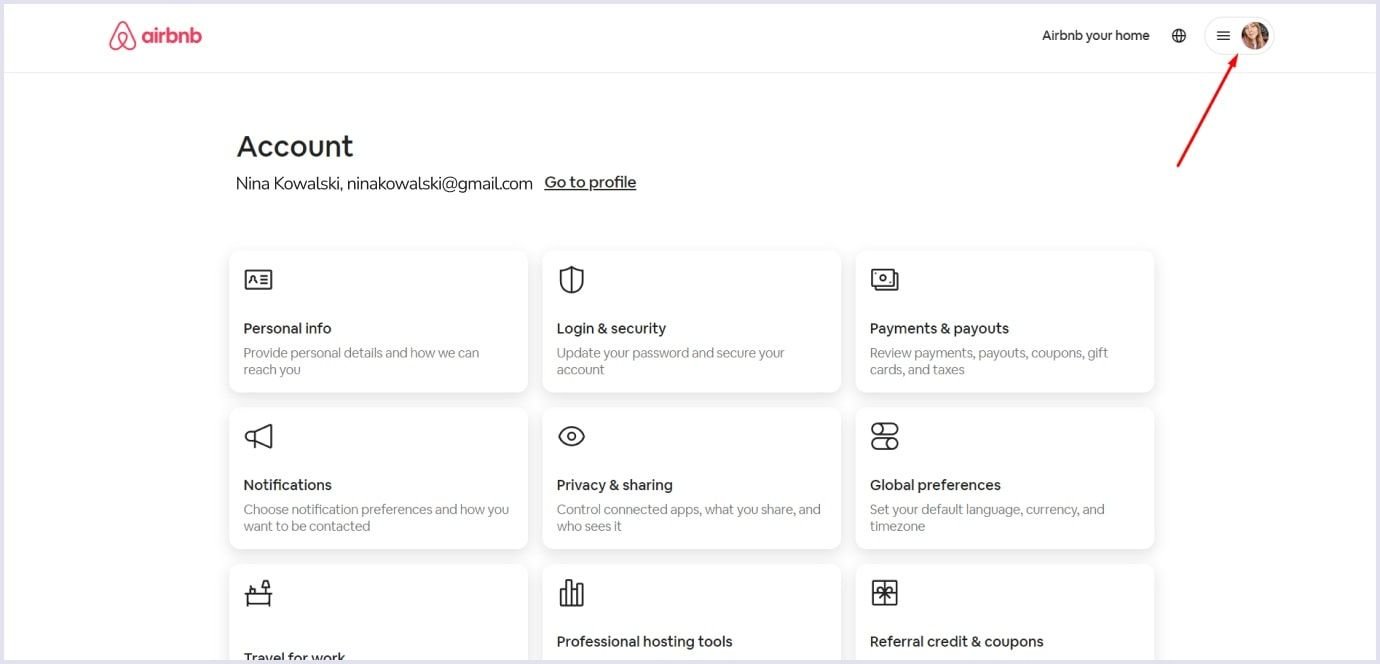
Source: Airbnb
Item listing allows sellers to offer their goods or services and make them visible to potential customers.
Let’s check how this listing is presented in Codica’s custom e-commerce solution.
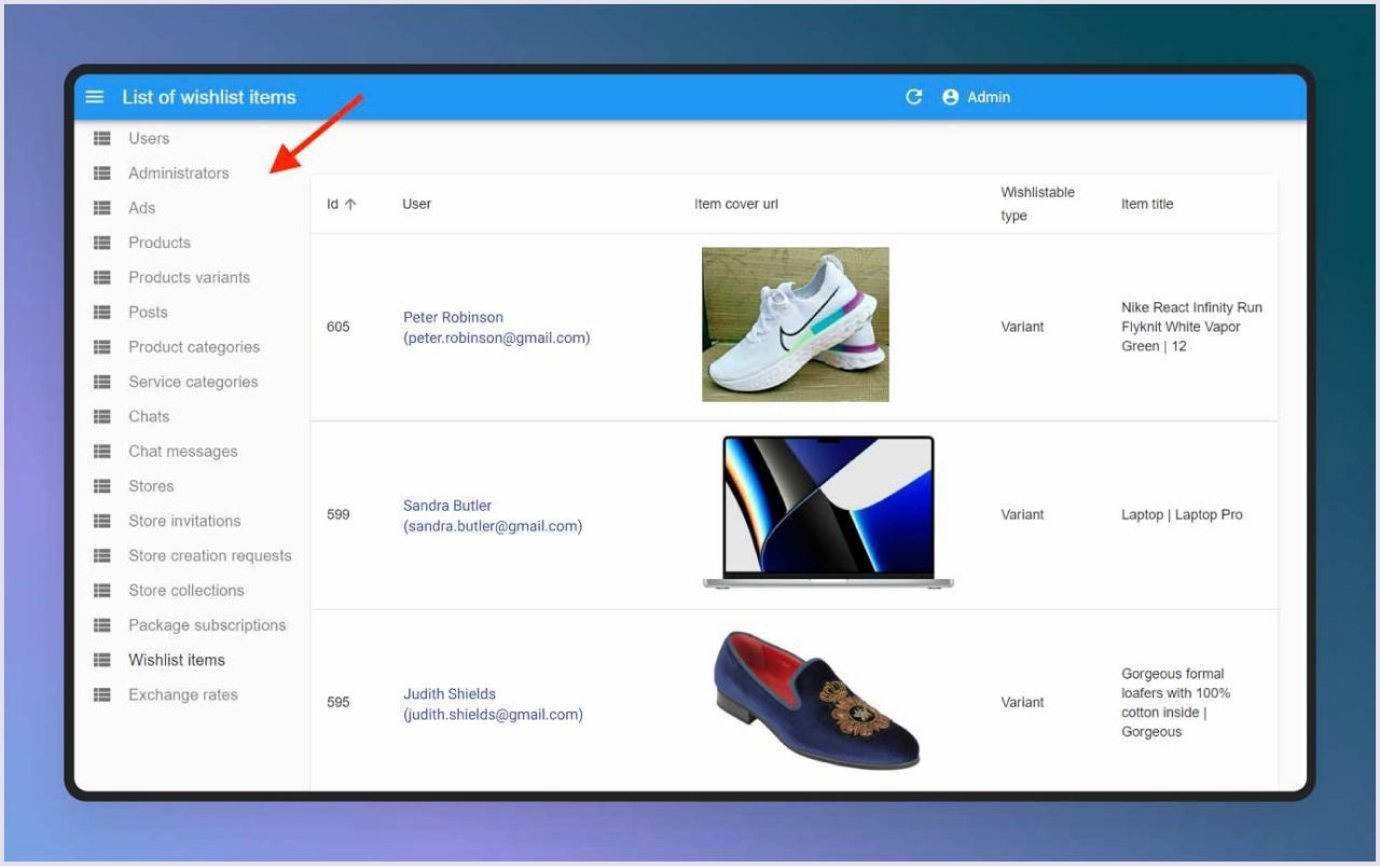
Advanced search is vital for any online store, making navigation more accessible and less time-consuming. This way, buyers can search for services or goods listed by suppliers. When enriched with artificial intelligence capabilities, it delivers personalized experiences for your customers.
Below is an example of the advanced research the Codica team implemented into an online marketplace for campers in Australia.
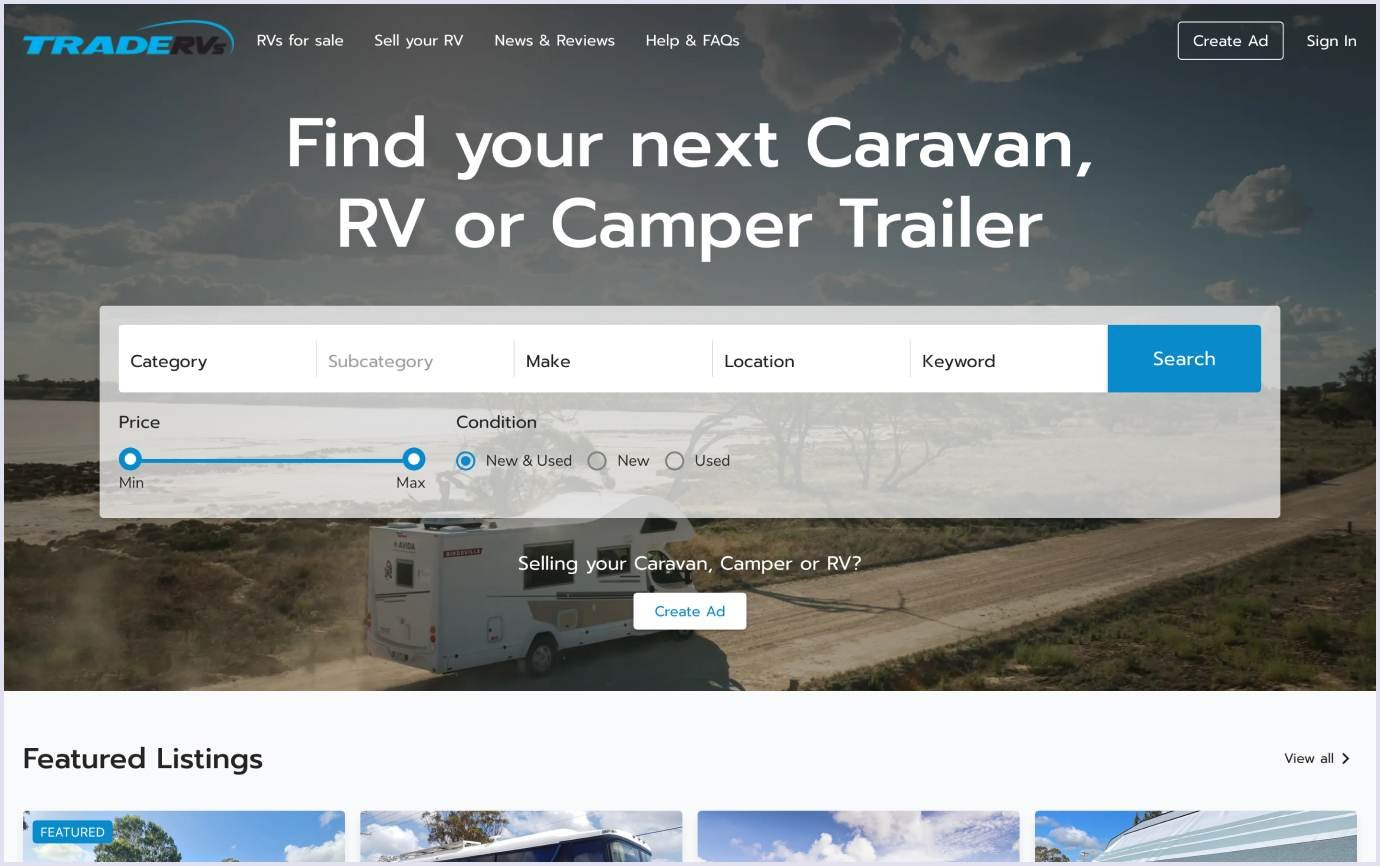
The product page should provide customers with comprehensive information about each item sold. High-quality photos, videos, and detailed descriptions make your online store look reliable.

Source: eBay
The shopping cart contains the products chosen. In this shopping cart, a buyer can change the number of goods they want to buy, delete them, view payment methods, shipping prices, etc.
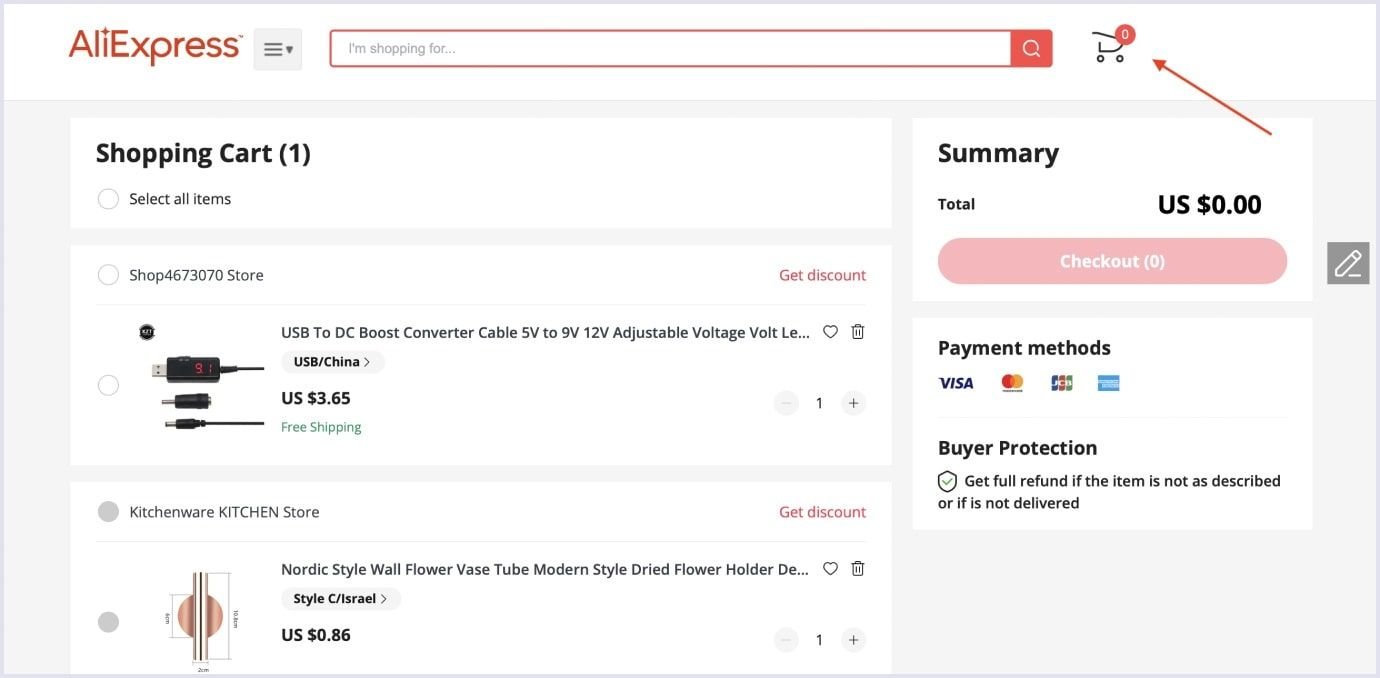
Source: AliExpress
Payment methods allow buyers to purchase via different types of cards and multiple gateways. With a wide array of marketplace payment options, you will enable your customers to choose the one that suits them best.
When choosing a payment system for the multi-vendor ecommerce marketplace platform, Codica selected Stripe. Besides, it is also the choice of Amazon, Shopify, Zoom, and many successful web solutions.
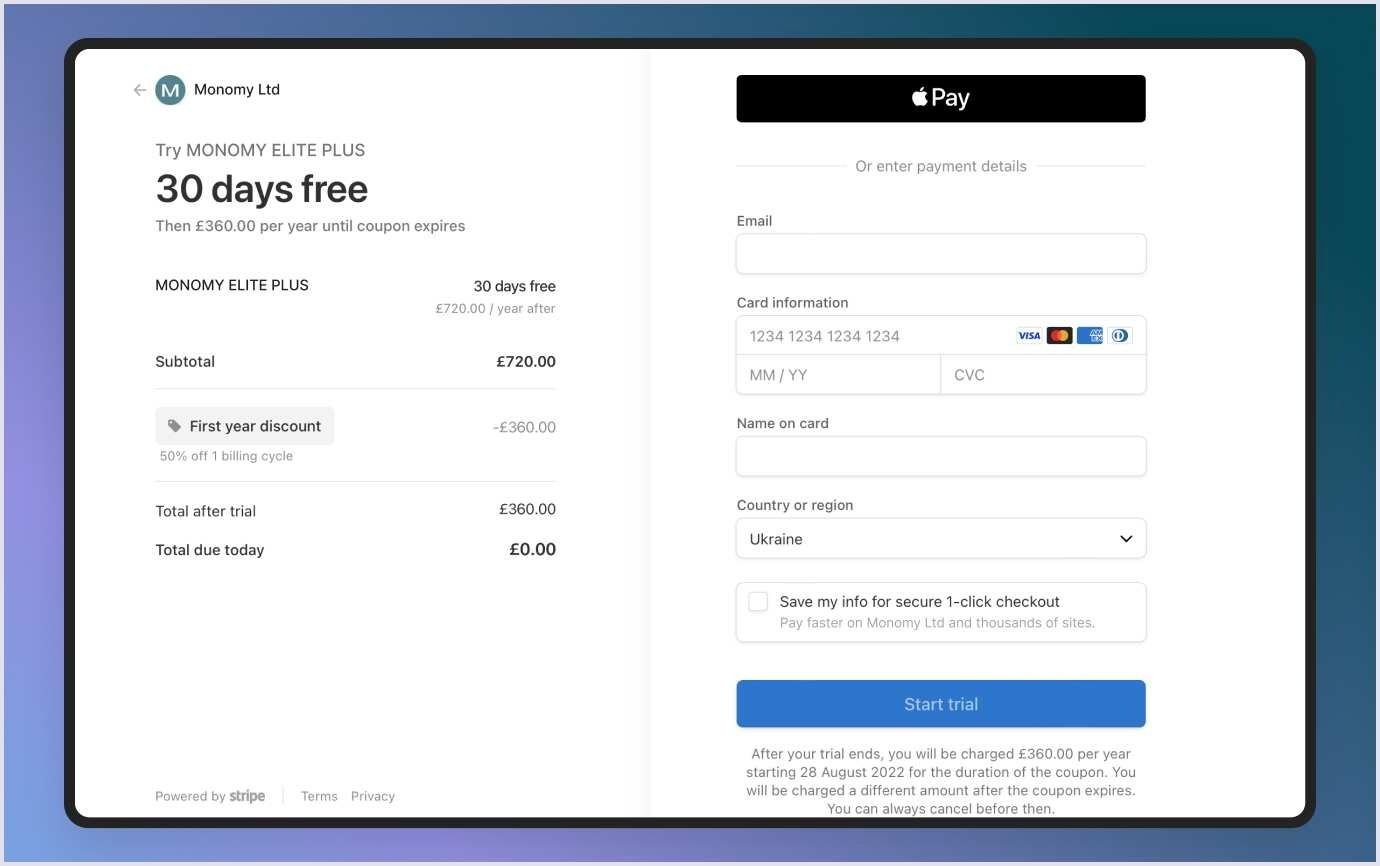
The administrator panel is essential to the business holder. Make the marketplace website's settings customizable for various groups of suppliers. These settings include shipping and payment methods and fees. The administrator can also manage sellers’ listings, filters, and categories.
Below, you can see the admin panel we built for the Digital Village project, an online collaboration marketplace.

Shipping is a must-have function that helps consumers choose the most convenient delivery option. For example, Etsy Shipping Labels lets you ship orders with USPS, FedEx, or Canada Post from your Etsy shop. Once you purchase a label for an order, Etsy specialists will automatically mark it as shipped. Then, print the label out, and your item is ready for delivery.
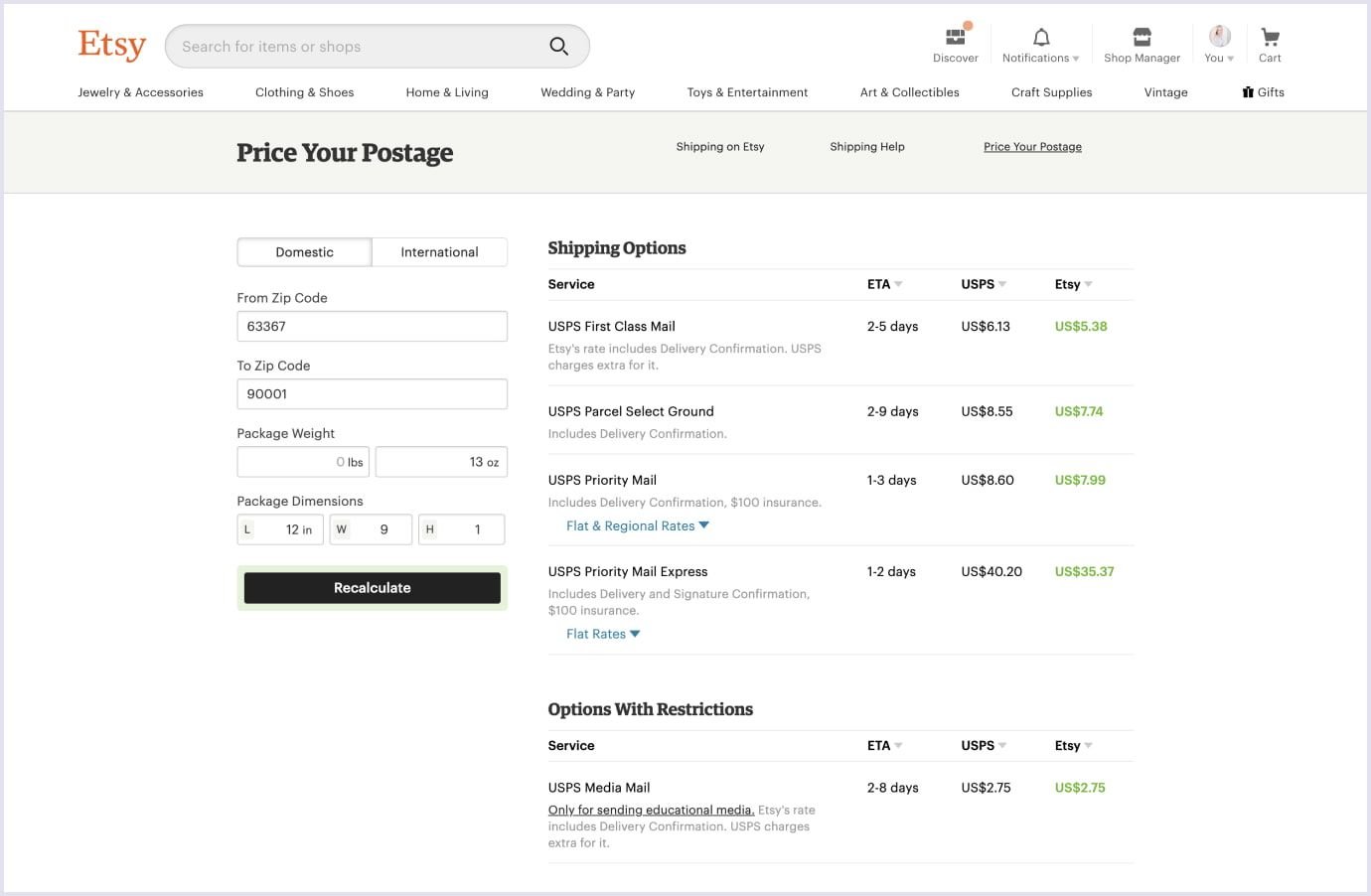
Source: Etsy
Additional marketplace functionality
Advanced features increase the cost of building an online marketplace, and we suggest adding them as your marketplace scales. You can start with the following:
Ratings and reviews help buyers come to well-thought-out purchasing decisions. It makes your website more trustworthy because you provide users with ratings for both products and vendors.
A wishlist is a potent marketing trick as this feature allows customers to save products they will likely buy. That's also how to create a marketplace website that drives extra engagement. Buyers sharing their wishlists with friends or family sends free traffic to your online store.
Notifications lead to specific pages within your marketplace website. It works this way: you get a notification, click on it, and immediately shift to a particular page. This way, it dramatically boosts user experience and accelerates many processes.

Source: Airbnb
Messaging enables sellers and buyers to discuss the details of products, pricing, shipping, etc.
Community support is a valuable service that processes users’ problems and helps to solve them.
AR, or augmented reality, brings enhanced experiences to your marketplace. This feature lets customers place items in their homes or other spaces before buying. The technology is platform-compatible and scalable.
Voice search brings convenience for your customers, reducing cart abandonment rates. Also, you can trace spoken queries to improve personalized offers on your marketplace.
Of course, this is only part of the complete list of all the possible features you can include in your marketplace website. We have listed examples of the most common features that users love, but they are optional in the MVP stage.
It is essential to look for best practices to make your product from day one. If you are interested in how to build an MVP, take advantage of our in-depth article. There, you will find the keys to success and step-by-step instructions.
Further reading: Top 15 Web Development Trends in 2025: The Expert Guide
Maintenance and support
As your marketplace evolves, you will need to spend costs on updates, backups, and troubleshooting. They ensure your platform runs continuously and meets new market needs and technical standards.
Maintenance and support costs for a marketplace website range between $1000 and $5,000 with an agency and $0 to $3500 per year with a website builder.
To meet ongoing challenges, we recommend that you turn to DevOps services. This approach helps you choose the best infrastructure, tune up development processes, and maintain the marketplace's secure operation. Thus, you pay less in the long run, avoiding costly issues.

Cost surprises: overbudgeting and bootstrapping
When developing a marketplace, overseeing potential obstacles and risks helps avoid excessive costs. The following are the sources that can lead to extra charges when you build a marketplace website:
- Scaling costs: Additional features, optimization, security, and customer support as your market grows;
- Code refactoring: Costs for refactoring and rewriting parts of the codebase for optimized performance and maintainability;
- Quality assurance: Testing costs to ensure a smooth user experience that was not anticipated;
- Third-party integrations: Incorporating third-party tools and services, such as payment gateways, analytics, and customer relationship management (CRM);
- Data storage and backup: Costs that rise over time as your marketplace accumulates and processes large amounts of information;
- Platform fees: Revenue and transaction charges that some platforms put and accrue over time;
- Licensing fees: Buying licenses required when using premium frameworks, plugins, or software;
- Regulatory compliance and legal costs: Fees for consulting, license, and fines to keep your marketplace running and addressing legal issues;
- Creating and managing content: Generating appealing content for your marketplace, such as blog articles, videos, and social media posts;
- Marketing corrections: Costs to adjust your marketing strategy and methods of reaching out to your customers via different channels;
- Team composition: Hiring developers, testers, marketers, content creators, and other professionals to support your marketplace.
You can manage hidden costs with an effective strategy to prevent overbudgeting. Bootstrapping involves resourceful financial management and cost-cutting measures. This technique allows you to navigate challenges and run your marketplace without relying on external funding sources.
An approach to cutting your marketplace development expenses
Building a marketplace is a challenging and versatile process that requires resources and effort. Still, you can follow specific steps to make the marketplace development process more optimized and cost-saving.
Research and plan with product discovery. You are set in the right direction when you start your marketplace project with thorough research and development planning. This approach will help you mitigate development risks and optimize the process, lowering the marketplace cost.
Build an MVP (minimum viable product). Beginning your marketplace as an MVP is a practical startup approach with massive cost-saving potential. Instead of building complex features with unknown business outcomes, you select the crucial features to make your marketplace usable for early adopters. Upon testing the MVP version, you can pass to more sophisticated features based on user feedback.
For example, we delivered a custom e-commerce solution. This multi-vendor marketplace platform enables users to do many things using just one platform by switching between its parts if needed.
Our team has verified the marketplace business idea with the help of an MVP platform and improved the custom ecommerce solution based on the collected data. Also, Codica made the platform attractive and user-friendly to increase user engagement and retention.
Check out the video below showing how this custom marketplace works.
Invest in security, quality assurance services, and DevOps. Your marketplace will process growing amounts of data, including sensitive information. So, the marketplace website’s work should be smooth and well-supported. Security, testing, and DevOps services are worth considering for the smooth operation of your marketplace and your customers’ delight.
Carefully select your technical partner. Marketplace development involves different aspects, technical and non-technical. So, finding a development company or team that will find the best solutions on your development path is vital.
A good choice is a partner with reasonable pricing, proven qualifications, and problem-solving skills. Ratings and reviews on prominent platforms, such as Clutch, Owler, and Glassdoor, will help you find and assess technical companies for your project.
For example, Codica uses an agile methodology that helps us check the project progress daily and weekly. Thus, we ensure making changes to the development process as soon as possible, lowering the marketplace cost.
Further reading: An Online Marketplace Marketing Strategy That Works in 2025
Choosing a reliable tech vendor to optimize costs
Only professionals can drive end users' loyalty, introducing them to more eligible online trading methods. So, how do you find the best-fit software company?
Here are some factors to consider when looking for a development team.
Expertise
When you need a team to build a marketplace website, look for an agency specializing in your case. Obtaining experience creating an online marketplace for a specific niche provides insight-driven solutions.
Also, based on previous cases, the developers think of hidden pitfalls beforehand. They know precisely how much it costs to build a marketplace website. Such experts can advise on the primary functionality to include if you want to start with a lean MVP.
You can find helpful evidence of the companies' proficiency in their portfolio with completed projects. At Codica, our portfolio lets us visualize our online marketplace development expertise. Also, you are welcome to see our designs for projects on Behance.
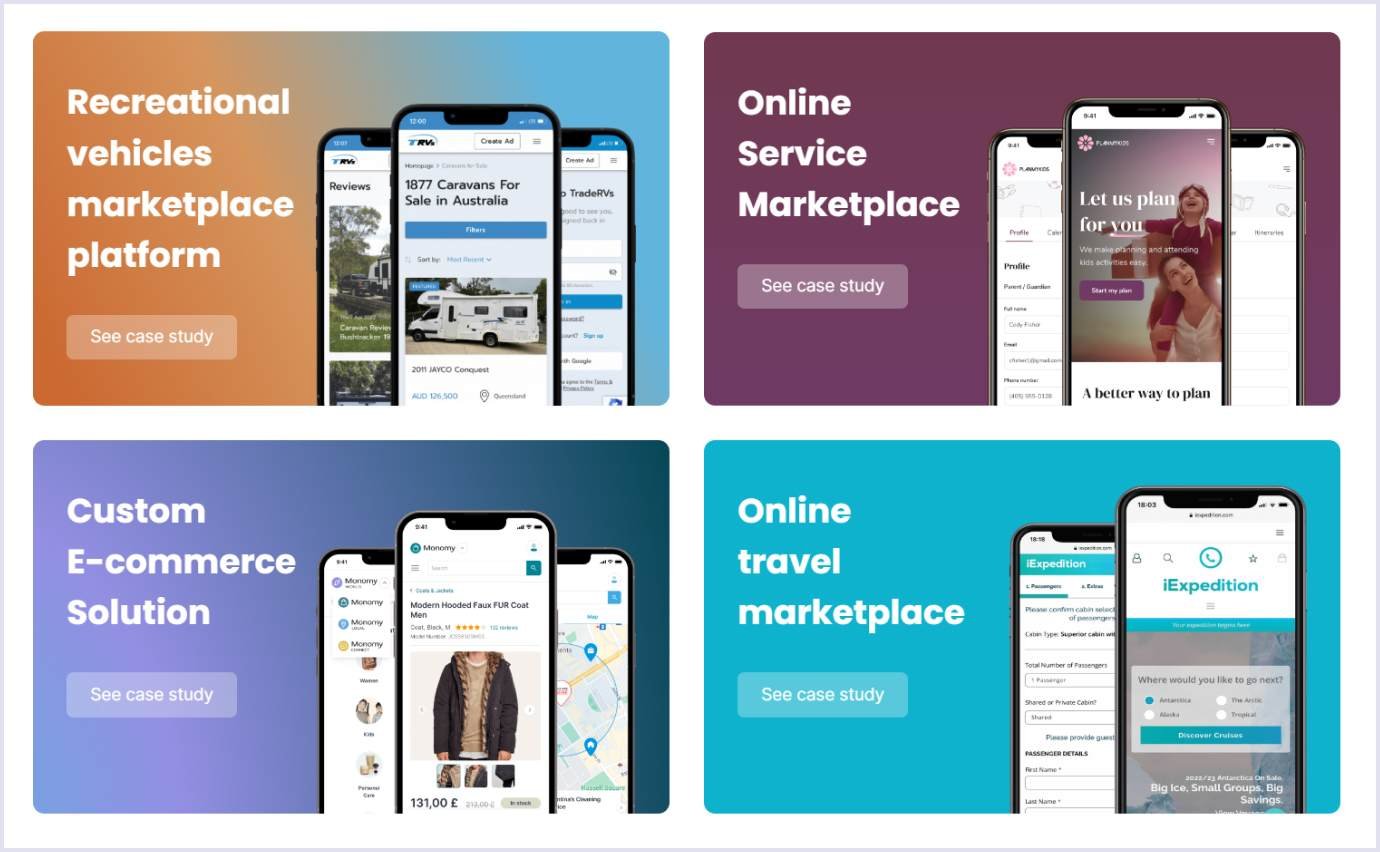
Check the market insights from independent research firms. A partnership with a reputable team means that skilled professionals are working on your project.
Related reading: Codica Named a Top Software Development Company by GoodFirms
Development methodology
Since developers' methods differ, clarify beforehand what methodology a company uses.
Today, the approach that proves its efficiency is the agile methodology. It enables software agencies to solve challenges that pop up in no time. So, this technique makes marketplace website development seamless and efficient.
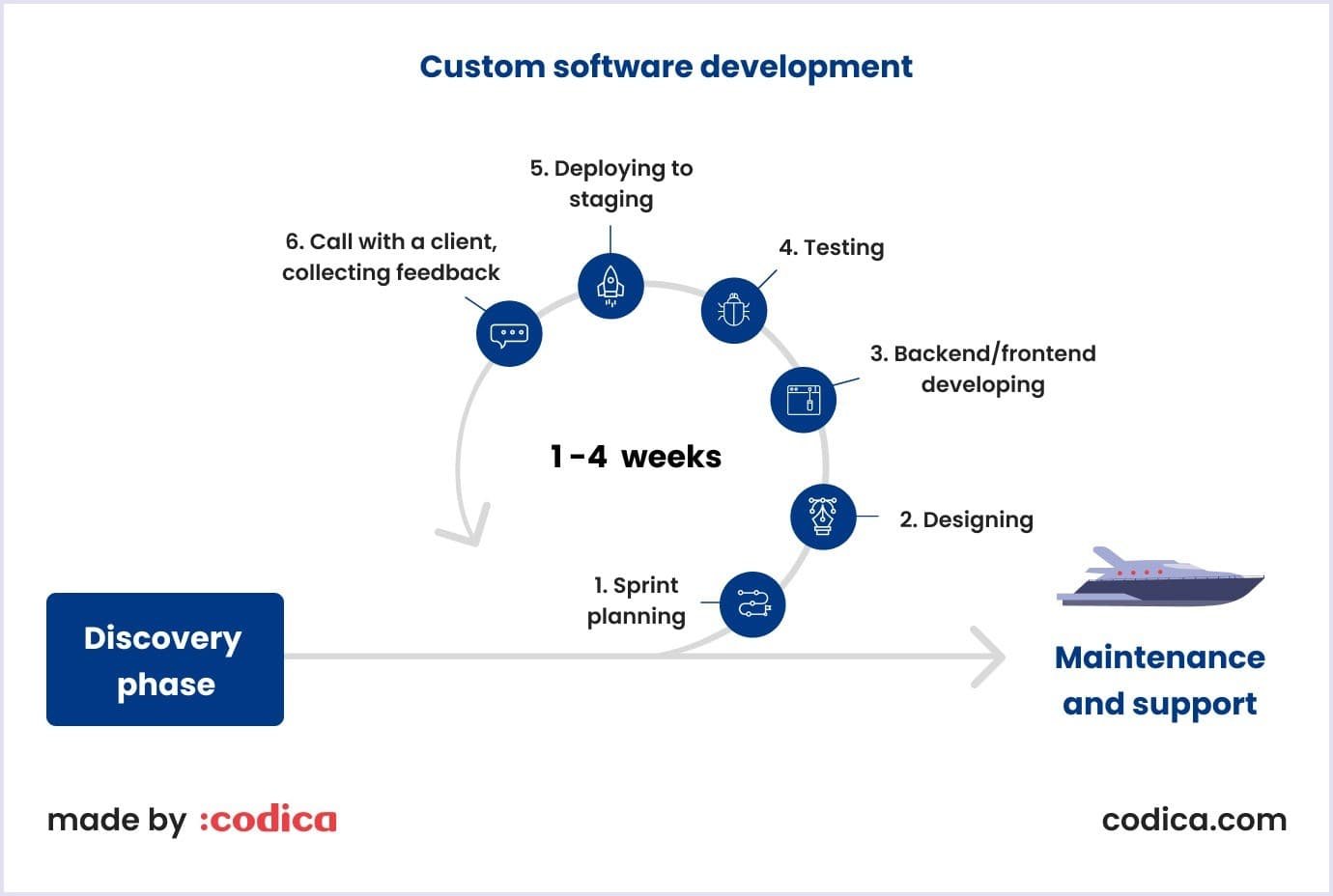
Let's briefly discuss the pros of having partnered with an agile company:
- Flexibility. Being able to respond swiftly to changing demands and benefit instantly from newfound ways of running a business.
- Saving time. Going agile empowers you with multiple feedback loops. It helps keep the project from disrupting and turning new findings into customer-driven features.
- Cost efficiency. Staying "always-on" allows you to see every change throughout your work progress. Iterating step-by-step, you estimate the importance of each feature to be implemented. Thus, you save money by testing and removing unnecessary components from the scope.
- Better control. Daily reports, which are part of the agile methodology, allow tracking of the progress of tasks. Managers can plan and correct the development progress as soon as possible.
- Reduced risks. Moving into small sprints, the agile team discovers and removes issues at the earliest stages of development.
Recommended reading: Building a Future-Ready Marketplace with MACH Architecture
The right technology stack
Another vital aspect of marketplace development implies that you use relevant technology.
If you need a website geared towards business scalability, custom software developers can help. Codica picks excellent and trusted tools for development to build a marketplace platform. Among them are JavaScript and Ruby, with frameworks and integrations depending on the project.
As a result, our clients get rich-featured websites without sacrificing speed performance.
For example, we widely use Ruby on Rails for building marketplaces. It is helpful thanks to the following advantages:
- Reliable. With Ruby on Rails, it becomes easy to implement complex business logic. You should only add some frontend framework. Luckily, there are several tools like React, Vue, and Angular.
- Scalable. This aspect is vital for startups and businesses that aim to expand. RoR proved its scalability when you need to deploy the server-side code. An online marketplace that uses Ruby on Rails can increase the flow and functionality of the operations.
- Cost- and time-saving. Ruby on Rails syntax is intuitive and readable. Plus, the framework offers a large number of open-source packages called gems. This framework also allows developers to perform better and deliver a solution in less time, thus saving costs.
- Secure. Increased resistance to vulnerabilities thanks to the built-in RoR mechanisms. They help you avoid threats like cross-site scripting and request forgery, session hijacking, IDOR attacks, and more.

Quality assurance and post-deployment support
Ensure the selected team provides quality assurance services throughout the development cycle. It is a great way to avoid risks, decrease bugs, and save marketplace website development costs.
Note that in companies like Codica, software services continue beyond your product's launch. Our team of experts will ensure your platform runs perfectly after the release.
Read also: How Automation Testing Increases Execution Speed, Test Coverage, and Effectiveness
Client reviews
Customers’ feedback is essential for ensuring that a development firm is credible, as reviews come from people’s experiences.
Here is a testimonial from David Watkins, who needed a solution to plan children’s leisure. David describes what challenges he faced as a parent and how Codica helped him solve them with a custom-built online marketplace. With our MVP software development services, David reduced the cost of building a marketplace website and ensured excellent user experience on his platform.
How much does it cost to build a marketplace app?
To summarize specific numbers, we prepared a table below showing the cost of creating an online marketplace. Check out the approximate costs of building must-have features for a primary online marketplace platform.
| How much does it cost to build a marketplace website? | ||
| Features | Time, hours | Cost ($50/h) |
| Design | ||
| UX development | 56 | $2,800 |
| UI development | 80 | $4,000 |
| Architecture | ||
| Project setup | 24 | $1,200 |
| DB structure | 32 | $1,600 |
| Integrations | ||
| Payment (Stripe or PayPal) | 64 | $3,200 |
| Shipment (Shippo) | 32 | $1,600 |
| Main functionality | ||
| Authorization and security | 64 | $3,200 |
| User profiles | 42 | $2,100 |
| Home page | 64 | $3,200 |
| Search and filters | 72 | $3,600 |
| Product page | 56 | $2,800 |
| Reviews & ratings | 48 | $2,400 |
| Shopping cart | 64 | $3,200 |
| Payments | 42 | $2,100 |
| Notifications | 32 | $1,600 |
| Buyer panel | 120 | $6,000 |
| Vendor panel | 164 | $8,200 |
| Admin panel | 120 | $6,000 |
| Non-development activity | ||
| Project management | 64 | $3,200 |
| Quality assurance | 80 | $4,000 |
| Code review | 48 | $2,400 |
| Total | 1368 | $68,400 |
Thus, you can see that it will take approximately 1368 hours to build an online marketplace. If we take the average rate of $50, the cost of building a marketplace website will start from $68,400.
The amount of development hours depends on the unique requirements of each project intended to build a marketplace site. Also, the final marketplace website development cost depends on the hourly rates of the software company you choose.
You may also like: 10 Best Marketplace Monetization Strategies to Succeed
Codica's expertise in marketplace website development
At Codica, we have been delivering multi-vendor marketplace development services since 2015. Our priority is to build marketplace websites that are fast-loading and engaging. This approach helps our clients generate traffic, boost conversion rates, and increase sales.
For the past seven years, we have built successful solutions for tour and travel software, automotive marketplace, activity booking marketplace, and other domains. We are proud of our efficient development process and deep expertise in building online marketplaces.
For example, the Codica team built a recreational vehicles marketplace platform, TradeRVs. This marketplace for caravans is a leading platform in Australia. With TradeRVs, campers can sell or buy new or used caravans, motorhomes, camper trailers, parts and accessories, and other recreational vehicles.
We redesigned the existing solution with our automotive software development services and created a new platform to help our client further develop their online caravan store. Also, our experts provided third-party integrations with service content providers and dealer management systems to increase user engagement.
Finally, Codica specialists customized the function of choosing different advertising packages to help private sellers and dealers increase sales by promoting their listings.
How does it work? The video below explains how the caravan-selling website functions.
Find more examples of our successful projects in our portfolio.
Summing up
A marketplace is a great way to start trading from scratch or test new markets without spending much money. This is a fascinating model for small companies with modest marketing budgets who can only spend a little money to launch a new line of business.
The marketplace format gives everyone access to an audience, a convenient interface, and reliable payment tools. We hope our detailed guide helped you understand the cost of creating an online marketplace and get benefits from it.
If you are looking for a reliable online marketplace development company, our expert team will gladly help to make a marketplace website for you. Feel free to contact us to discuss your project!


